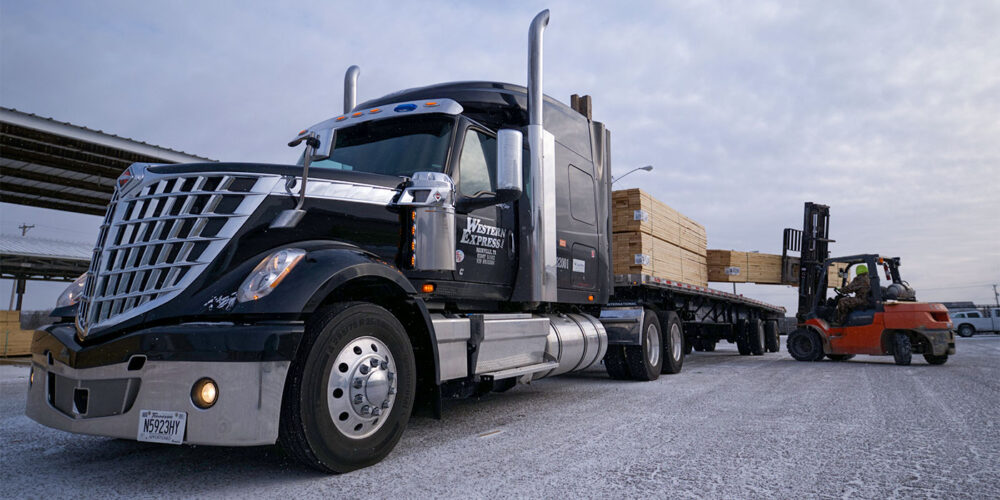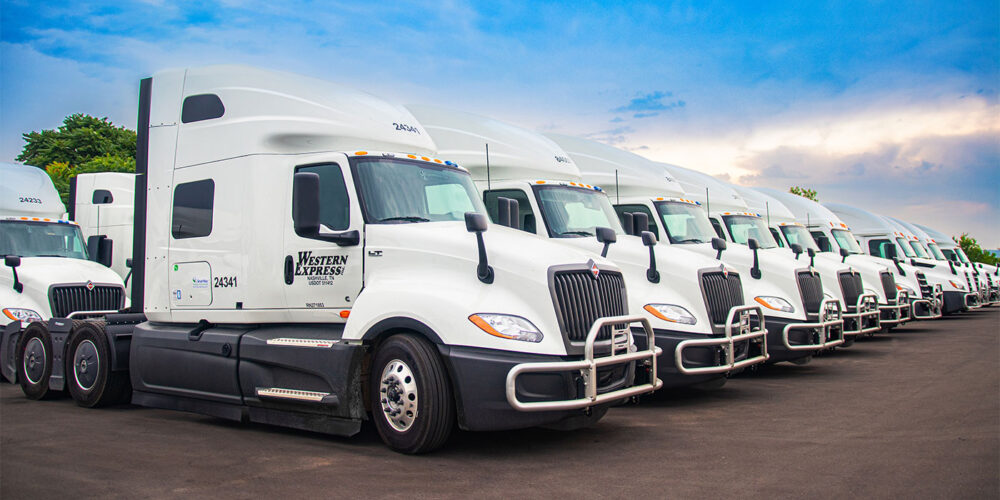It’s all about the numbers. For Daniel Patterson, two years ago, the number was 15. “And that was optimistic, but I was hoping it was doable over a two-year span,” he recalled. For Patterson, who serves as Western Express’ director of safety, “15” represented a 15% improvement in accidents per million miles. A lower accident rate would mean huge benefits to Western Express, which runs 3,600 trucks – mostly long-haul. The fleet accumulates more than 371 million miles annually.
Patterson didn’t reach his goal number. He blew past it. In 24 months, the company achieved a 22% improvement in its accident rate. It’s meant lower claims costs, repair bills (Western has its own repair facility), insurance rates, and better customer service – the company has won numerous Carrier of the Year awards from its customers.
How did Western Express do it?
“We have three pillars in safety,” Patterson explained. “Awareness, continuous training, and technology–those three work together. Having them in place pays dividends for our drivers and our company.”
When it comes to technology, a big part of Western Express’ strategy is using Drivewyze Safety+. According to Patterson, proactive in-cab notifications for upcoming road hazards; the ability to create custom safety notifications; and a portal to track driver behavior and then coach drivers based on results, has helped the company immensely.
“We run primarily irregular routes, and around 1,000 of our tractors are hauling flatbeds,” said Patterson. “So, our drivers are often on unfamiliar roads or picking up from unfamiliar customers. That makes the notifications so much more valuable. On dangerous curve notifications alone, we’ve seen a 20% reduction in speed when our driver gets the alert. Through Drivewyze analytics, we’re 1.6 mph below average in speed as compared to other fleets getting Drivewyze safety notifications. That validates to us that the notifications work. We’re also using the custom geo-fencing capabilities of Safety+. We have more than 350 custom zones already set up, 300 of which are at customer sites.”
Patterson said that in flatbed hauling, each customer has its own protocol. “We will have instructions in our load notes, but with Drivewyze, we can create geo-fenced reminder messages that ensure our drivers follow customer protocols. Some might require our drivers to wear hard hats or have steel-toed boots when on site. We have one customer that requires ice cleats to be worn in the winter. And, load securement is critical, so we may create messaging for difficult loads. All of this helps us reduce injuries from slips, trips and falls. What’s more, if a customer has a drop box for a bill of lading, we can remind the driver of this as well. These custom notifications really help our drivers and helps us stay in compliance with customer requirements.”
Custom notifications are also set up by Western Express when they notice any “hot zones” where incidents might take place. Part of the safety program at Western Express is an in-house IT system to track everything related to safety. “This allows us to create our own heat map, showing where any incidents or citations are above the norm,” explained Patterson. “We can then deep dive to see where the issue is. We can even identify patterns based on the lane, or the customer. This information is powerful and allows us to implement added safety measures–such as custom messages to our drivers–to corral the problem.”

When law enforcement conducts roadside inspections, Western Express wants to ensure its drivers comply. “In the past, we’ve had inspection sites come up fast on our drivers and they missed pulling in for a brake check as an example. That’s cost us a citation for ‘failure to obey a traffic control device.’ Now, when we know of an area where there is an inspection, we’re quick to add a custom alert through the Drivewyze portal.”
Another area where custom geo-fencing became a solution for Western Express was in developing its own severe weather notifications. In 2022, the company began geo-fencing areas around the country that were experiencing harsh weather that could impact driver safety and deliveries.
“We had heard of the idea from another major fleet that uses Safety+,” said Patterson. “So, our regional teams put together weather alerts and we focused on the major interstates – giving our drivers a heads up on incoming snow for example, or where chains were being required,” recalled Patterson. “All these winter weather alerts we put together helped our drivers – they appreciated the notifications. In the summer, we gave out heat advisories, which was really important for our flatbed drivers. We wanted them to stay hydrated and not have any heat-related health incidents.”
Western Express mentioned the custom alerts to Drivewyze – which spurred Drivewyze to team up with a national weather service to develop Weather alerts for its customers. “Now that there is an automated service available, we’ve gone that route,” said Patterson. “Drivewyze took what we and others were doing manually and built it out exponentially. It’s something that has an impact on reducing accidents, while making life easier for drivers behind the wheel.”
Looking further at causes of major accidents – what Patterson calls the Big 11 (including incidents caused by rollovers, speed, bridge hits, distraction and fatigue), Western Express has seen notifications and speed controls help the company tremendously. “We travel in New York frequently,” said Patterson. “New York is well known for having low bridges (on average, the state has more than 300 bridge strikes per year). Before we started getting low bridge alerts from Drivewyze, and a complimentary technology, we were hitting a bridge every few weeks. This not only cost us money for repairs, but we also had to pay municipalities for damages. Today, bridge strikes are virtually non-existent.
“Speeding has also been curtailed thanks to that same geo-fencing technology,” continued Patterson. “Roads are mapped, and trucks are governed based on the speed limit in all areas. Year over year, we’re down 20% on speeding citations.”
To further help Western Express monitor driver fatigue and distraction – plus provide visual proof of any at-fault accidents – the company uses forward-facing camera technology. “This is yet another important part of our technology,” said Patterson.
According to Patterson, drivers have responded well to all the technology Western Express has put into place. “It’s all come together nicely,” said Patterson. “Improving truck safety has many different layers, and Drivewyze Safety+ has been a major contributor to our success. You don’t want to stack alert upon alert to where they become ‘noise’ to a driver. Drivewyze does a great job of understanding that and puts notifications where they can make the most impact. When a driver gets a notification, you want a reaction. And, through our portal, we can see that reaction. This helps with driver coaching and makes for an overall safer driver. And with a safe driver, everyone wins.”














